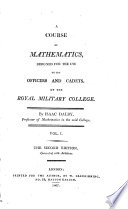 | Isaac Dalby - Mathematics - 1807 - 476 pages
...15 9 5 3 13<5. In a rank of proportionals standing in order, two and two. — As any antecedent is to its consequent, so is the sum of all the antecedents to the sum of all the consequents. Let the proportionals be 3 : 5 : : 9 : 15 : : 36 : 60. Then 3 : 5 (or... | |
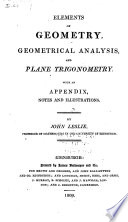 | Sir John Leslie - Geometry, Analytic - 1809 - 542 pages
...ptrturbate, equality. PROP. XIX. THEOR. If there be any number of proportionals, as one antecedent is to its consequent, so is the sum of all the antecedents to the sum of all the consequents. Let A:B::C:D::E:F::6:H; then A:B::A+C +E+G:B + D+F+H. Because A : B... | |
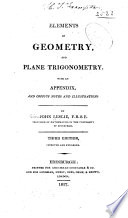 | Sir John Leslie - Geometry - 1817 - 456 pages
...perturbate, equality. PROP. XIX. THEOR. If there be any number of proportionals, as one antecedent is to its consequent, so is the sum of all the antecedents to the sum of all the consequents. Let A : B : : C : D : : E : F : : G : H; then A : B : : A+C+E+G : B+D+F+H.... | |
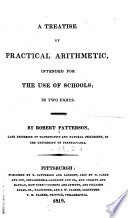 | Robert Patterson - Arithmetic - 1819 - 174 pages
...antecedents will = « — g, and the sum of all the consequents = s — I : but as one of the antecedents is to its consequent, so is the sum of all the antecedents, to the sum of all the consequents-)-. That is, / : IR : : s — g : * — /. Ilente - — Rg l- Theor.... | |
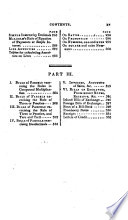 | Thomas Keith - Arithmetic - 1822 - 354 pages
...: A — B :: c : C — D. , IB. If several quantities be proportional, as one of the antecedents is to its consequent ; so is the sum of all the antecedents, to the sum of all the consequents. Thus, if A : B :: C : D :: E : F :: G : H, &c. Then A : B :: A+C+E+G... | |
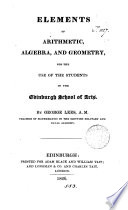 | George Lees - 1826 - 276 pages
...— ,b::c+d: c — d. 117. WJien any number of quantities are proportionals, i as one antecedent is to its consequent, so is the sum of all the antecedents to the sum of all the consequents. Let a : b : : c : d : : e :f, &c. Then shall a:b:: «+c+c+&c. : b+d+f+&c.... | |
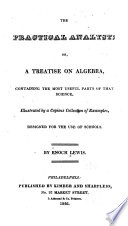 | Enoch Lewis - Algebra - 1826 - 180 pages
...a+b : as-b : : c+d : c*rd. 65. When any number of quantities are proportionals, as one antecedent is to its consequent, so is the sum of all the antecedents to the sum of all the consequents. Let a : b : : c :'d : : e :f : : g : h, &c., then (art. 62.) ad=bc,... | |
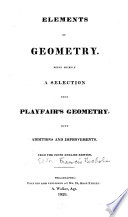 | John Playfair - Geometry - 1829 - 210 pages
...division, conversion, and mixing. If several quantities be proportional, as one of the antecedents is to its consequent, so is the sum of all the antecedents to the sum of all the consequents. If four quantities be proportional, and if the first and second be... | |
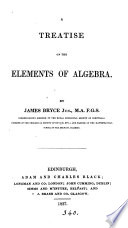 | James Bryce - Algebra - 1837 - 322 pages
...d±c, and b±a:b::d±c:d. 178. V. When any number of quantities are proportionals, as one antecedent is to its consequent, so is the sum of all the antecedents to the sum of all the consequents. Let there be any number of proportionals, a:b::c:d::e:f; then ad=bc,... | |
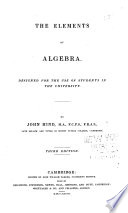 | John Hind - Algebra - 1837 - 584 pages
...b(a + c + e + &c.): , , aa + c + e + &c. whence, - = : b 6 + d+/+&c. that is, as one antecedent is to its consequent, so is the sum of all the antecedents to the sum of all the consequents. Similarly, if a : b = b : c = c : d = &c., we shall have aa + b + c... | |
| |